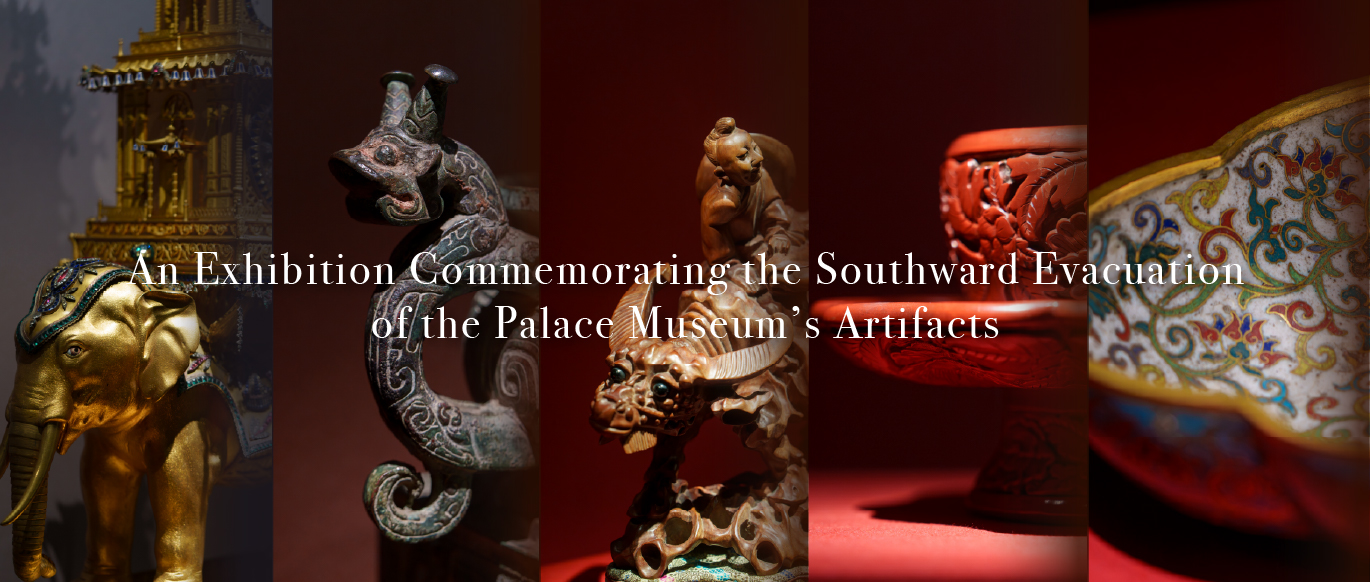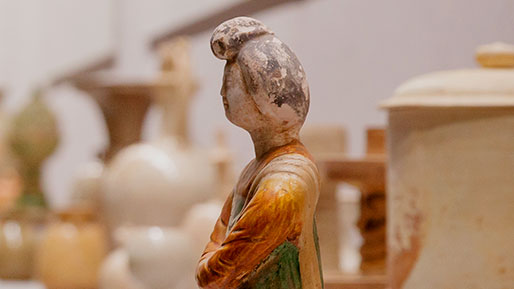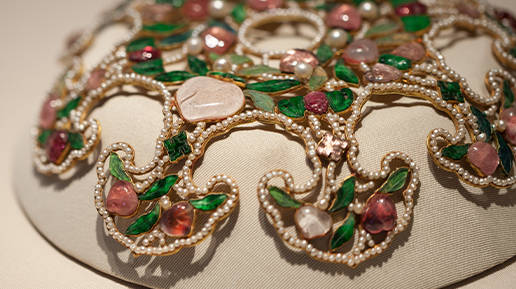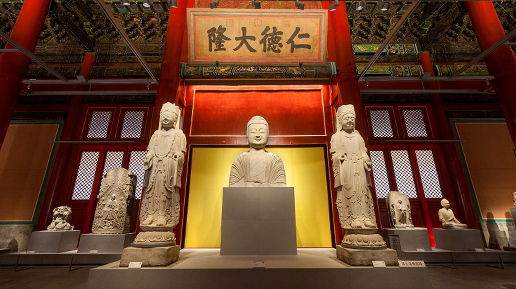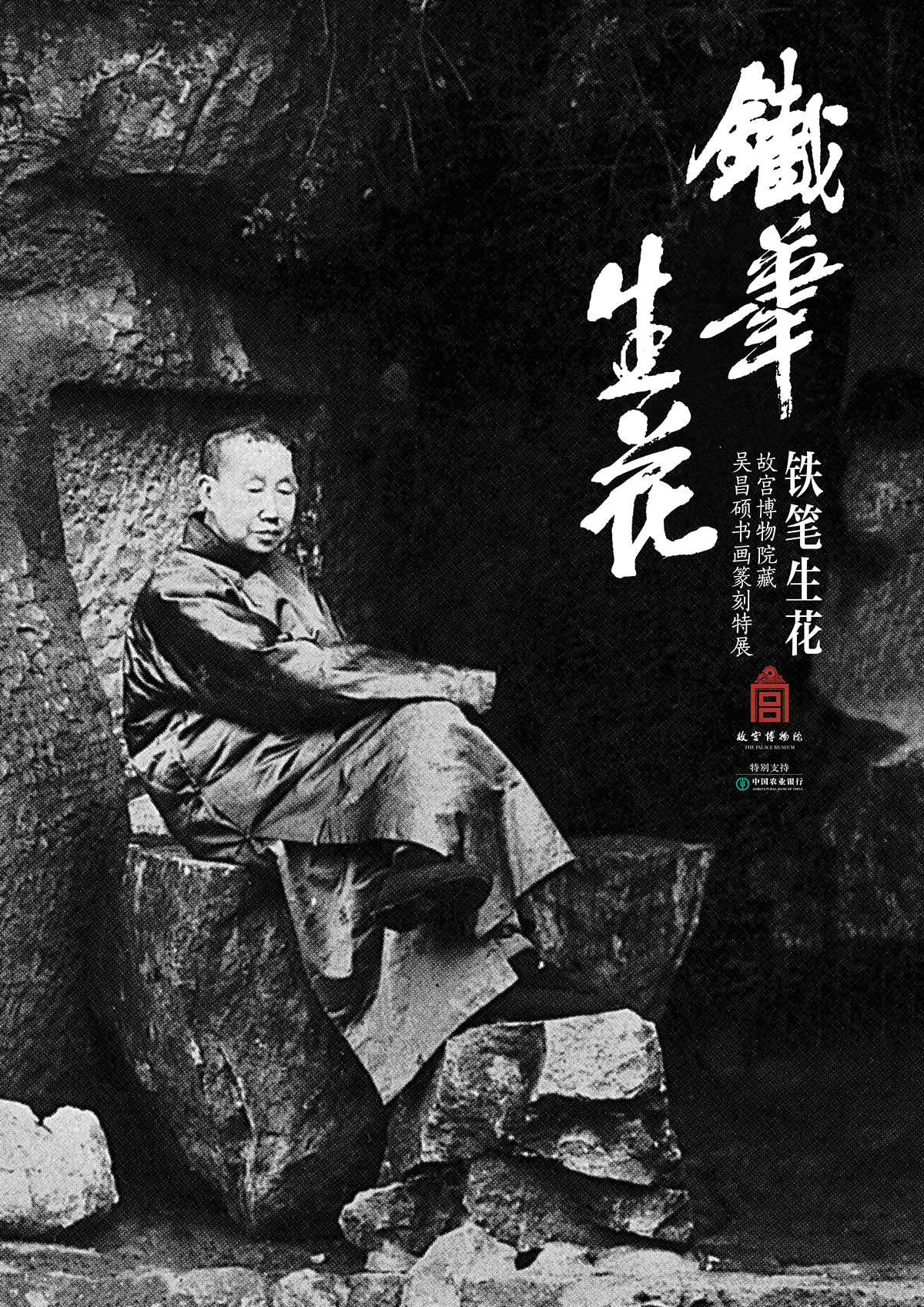
The Life of Wu Changshuo
Wu Changshuo (1844–1927) is recognized as one of the most important calligraphers and seal engravers of modern China. His art marks the intersection of traditional and modern styles as he preserved ancient traditions and innovated modern trends. He was born in Anji County in Huzhou, Zhejiang Province in the year 1844 (the twenty-fourth year of the Daoguang reign) and lived through the reigns of the Daoguang (1821–1850), Xianfeng (1851–1861), Tongzhi (1862–1873), Guangxu (1875–1908), and Xuantong (1909–1911) emperors. Having experienced the Xinhai Revolution of 1911 and the establishment of the Republic of China, he died at the age (in sui) of eighty-four in 1927.
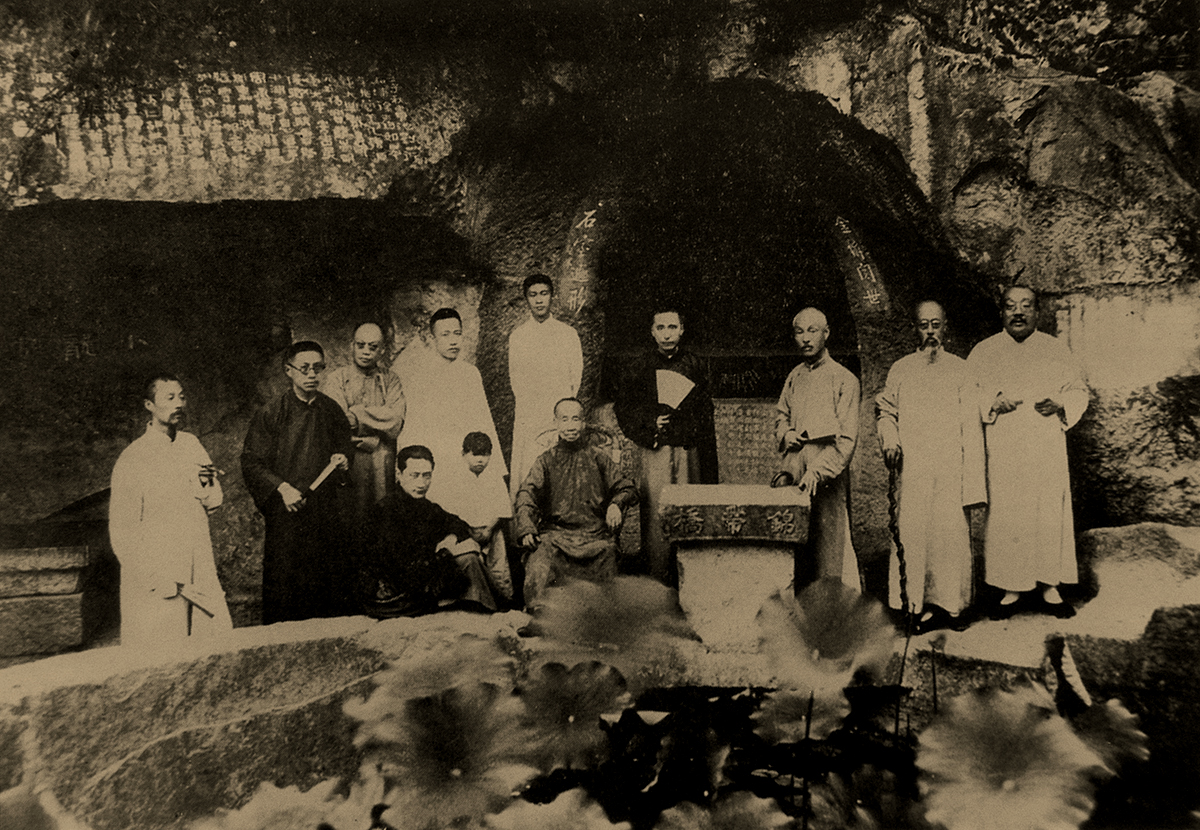
Wu Changshuo (seated, center front) with members of the Xiling Society for Seal Engraving (Xiling yinshe)
He was known by a variety of sobriquets throughout his long life. Originally named Wu Jun or Wu Junqing by his family, he was later known by courtesy names such as Cangshi (lit. “Green Stone”), Changshi (lit. “Flourishing Stone”), and Changshuo (lit. “Flourishing Greatness”) and style names like Foulu (lit. “Wine Vessel Hut”), Kutie (lit. “Bitter Iron”), Laofou (lit. “Old Wine Vessel”), Foudaoren (lit. “Man of the Wine Vessel Way”), Shizunzhe (lit. “Respecter of Stones”), Pohe Tingzhang (lit. “Chief of the Pavilion of Ruined Lotus”), and Wuhu Yin’gai (lit. “Seal Beggar of the Five Lakes”). After the age of seventy (in sui), people knew him as Longgong (lit. “Deaf Duke”) or Dalong (lit. “Big Deaf”)
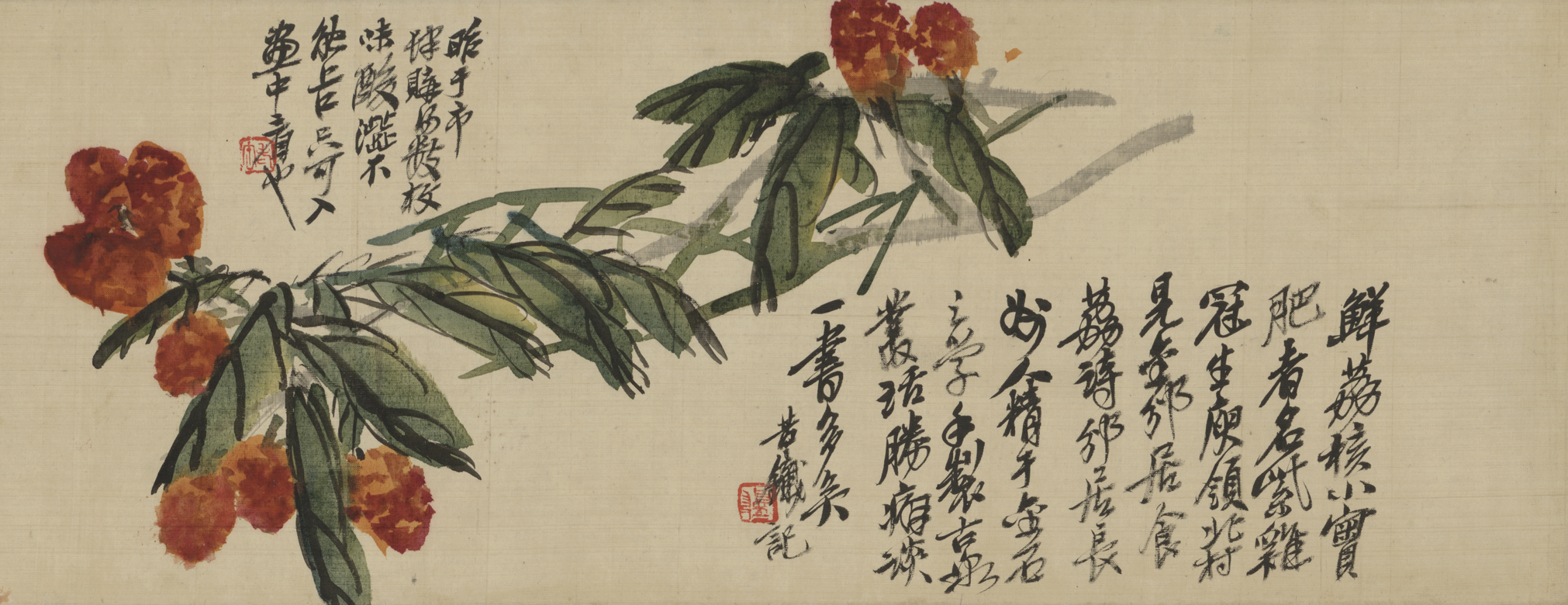
Detail of Lychee by Wu Changshuo, Qing dynasty
Wu began his career innovating the arts of epigraphy (Chinese jinshi, lit. “gold and stone”) and seal engraving. With his lifetime exploration of the ancient Stone Drum Inscriptions (Shigu wen), his greatest accomplishments were in seal script calligraphy and engraving. As he imitated ancient epigraphy, he produced his own innovations. In his time, his creative style surpassed all others.
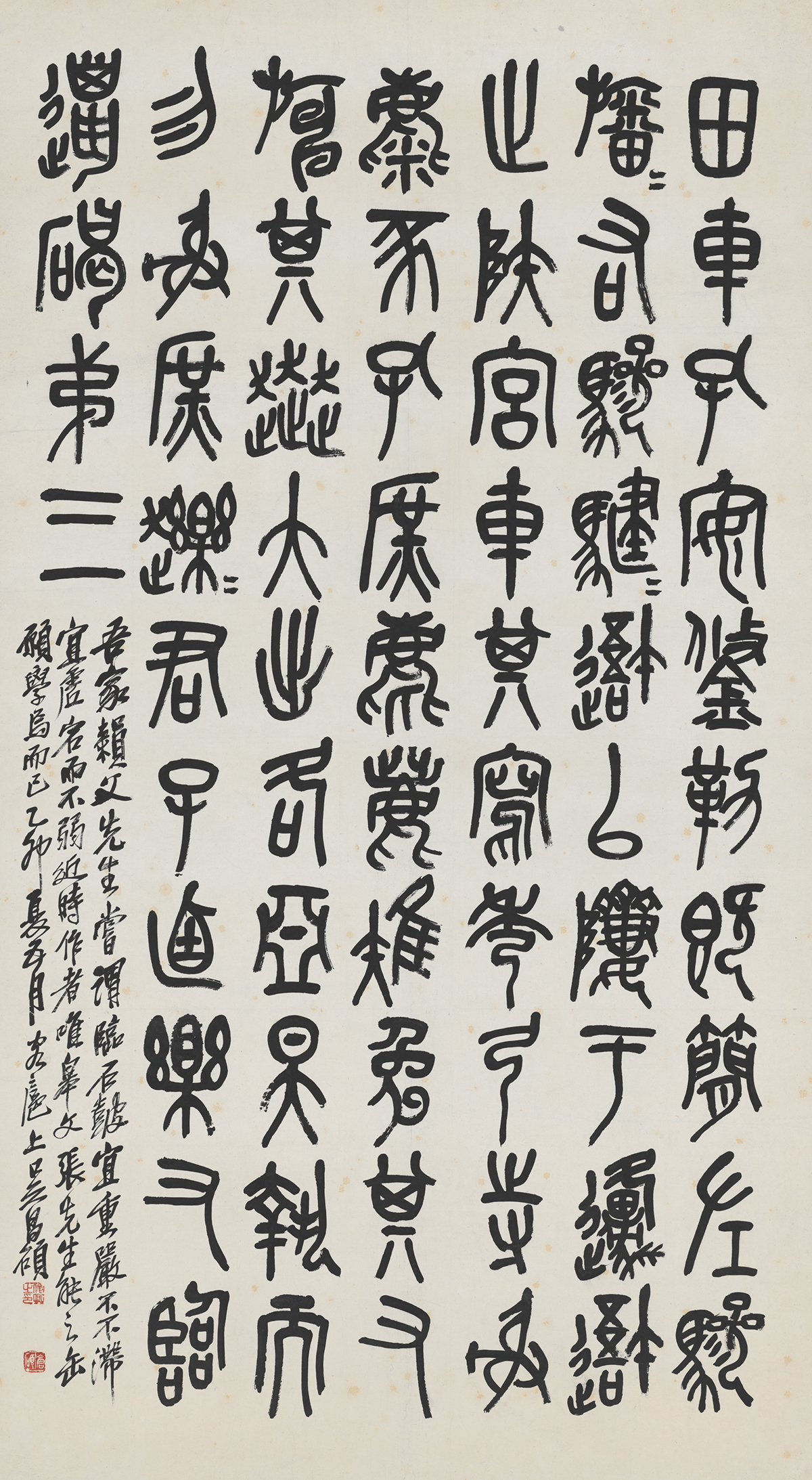
Calligraphy of Stone Drum Inscriptions by Wu Changshuo, Qing dynasty
After the age of forty (in sui), Wu began to study painting. He approached painting with his proficient calligraphic technique and innovated on an ancient Chinese freehand style (daxieyi, sometimes translated as monumental freehand or large freehand style). He perfected the art of painting flowers in this style. As he blended classic approaches with pioneering forms, he condensed the artistic genius of bygone artists and demonstrated his unfettered attitude and artistic knowledge.
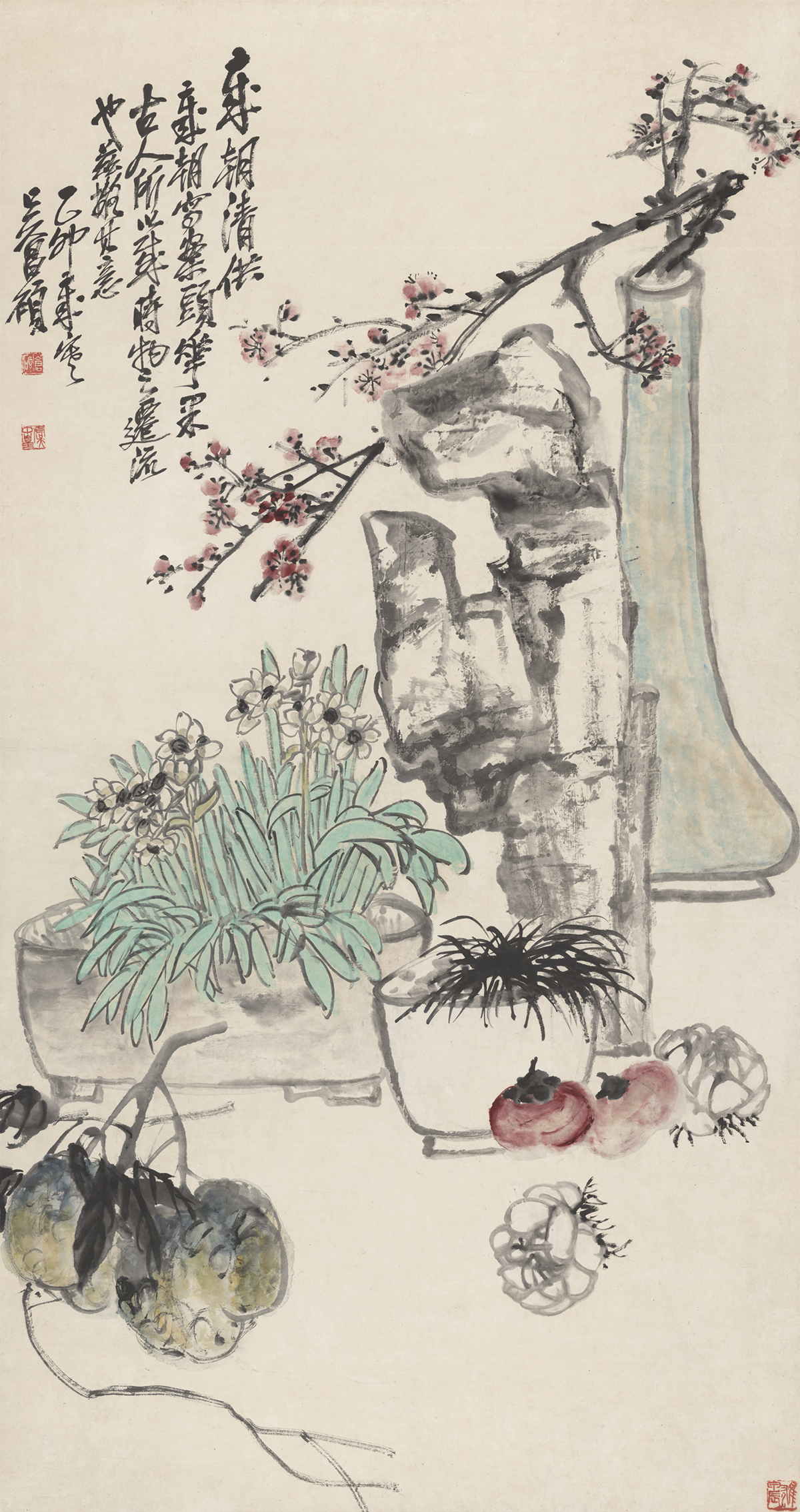
Potted Plants by Wu Changshuo, Qing dynasty
Wu lived at a time in which traditional modes of art were being transformed by modern styles, and his art shows how he preserved Chinese tradition while assimilating the commercialism and social mores of the nascent modern period. His art became an amalgamation of elegant and common styles. Widely acclaimed and highly influential, he played a decisive role in transforming the modern painting scene and the work of artists who followed in his footsteps.
Exclusive Showcase of Wu Changshuo’s Art
The first exhibition to exclusively feature Wu’s art, this exhibition is called “Blossoming Iron Brush, Flowering Literary Brilliance” (Tiebi shenghua, zhanfang wenhua) and showcases Wu’s artistry with over a hundred of his works. The exhibition is divided into four sections focusing on the artistic sources of his paintings, his freehand painting style, his relationships and influence, and his calligraphy and seal engraving. The Palace Museum has over two-hundred works of calligraphy, painting, and engraved-seals by Wu. Spanning forty years of his life, they represent each stage of his career from after his fortieth birthday to shortly before his passing. Displaying the depth and breadth of his artistic insight and expression, the contiguous works include an abundance of subjects and forms.
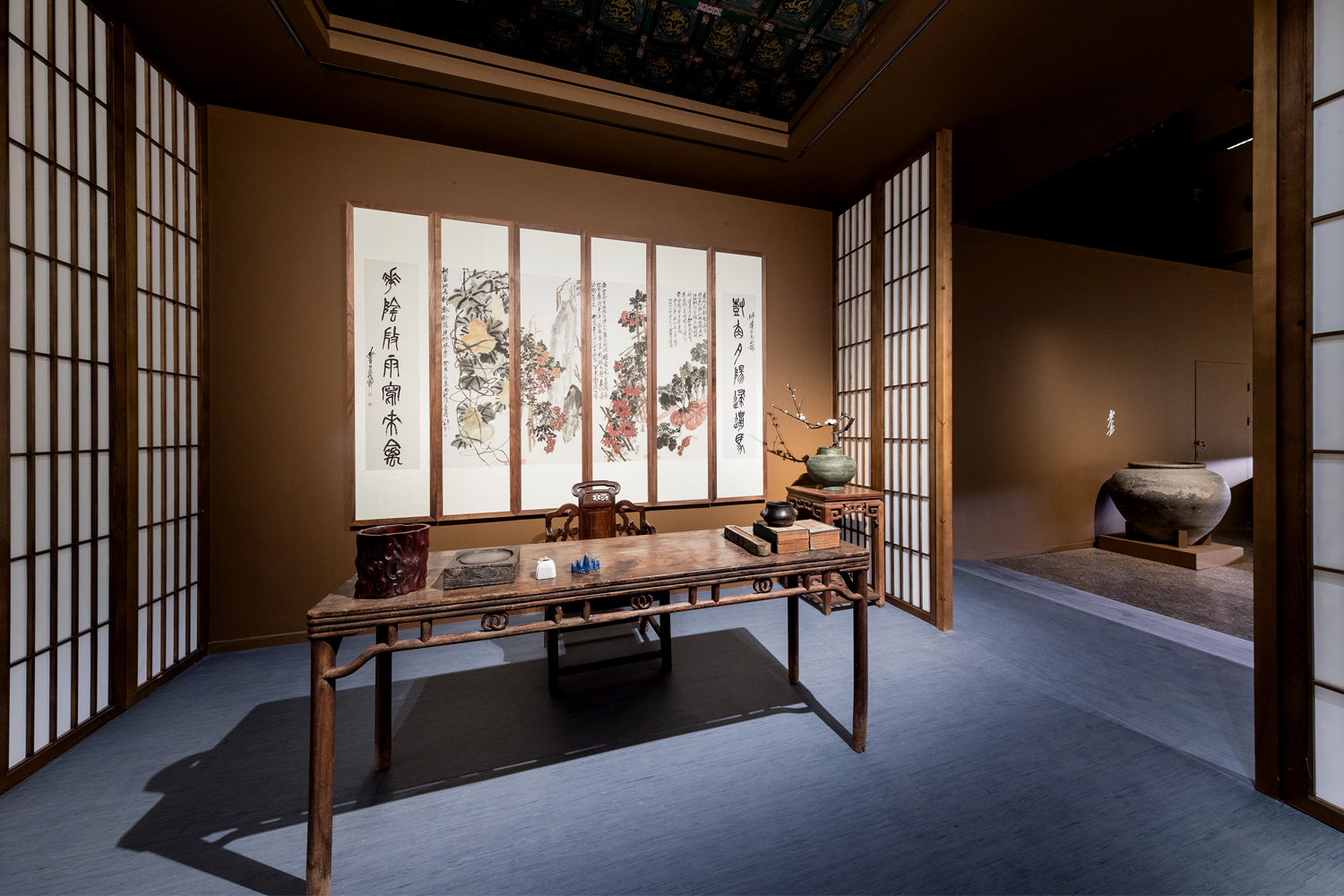
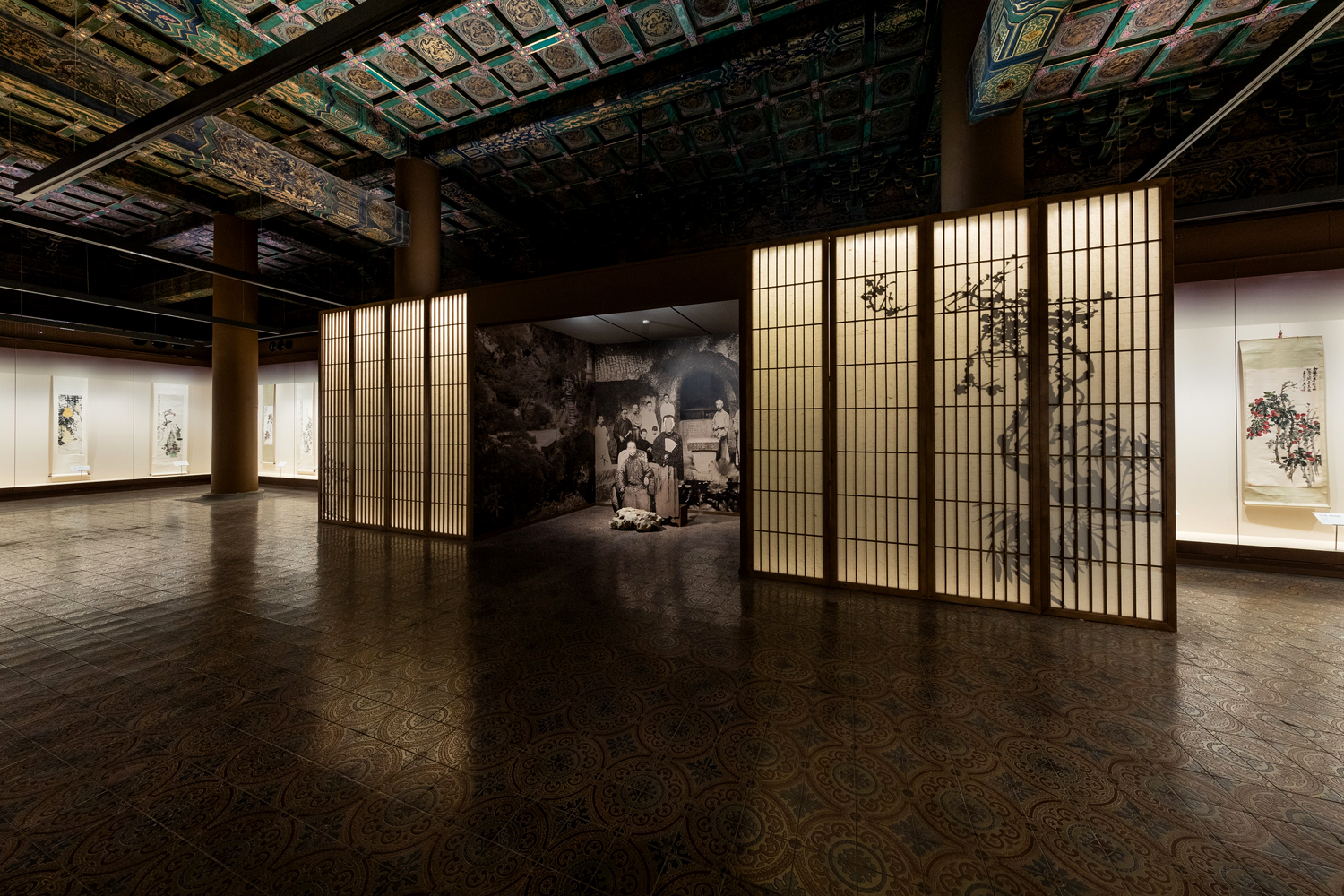
Section I: Preserving the Old, Pioneering the New
This first section of the exhibition displays a variety of works from the Palace Museum collection with paintings by Wu Changshuo on view with works by artists such as Chen Chun (1483–1544) and Xu Wei (1521–1593) of the Ming dynasty (1368–1644) and Zhu Da (also known as Bada Shanren, 1626–1705), Li Shan (1686–1756), Zhao Zhiqian (1829–1884), and Ren Bonian (1840–1895) of the Qing dynasty (1644–1911). This arrangement allows for comparative appreciation and demonstrates how Wu maintained traditional modes of painting while learning from his contemporaries.
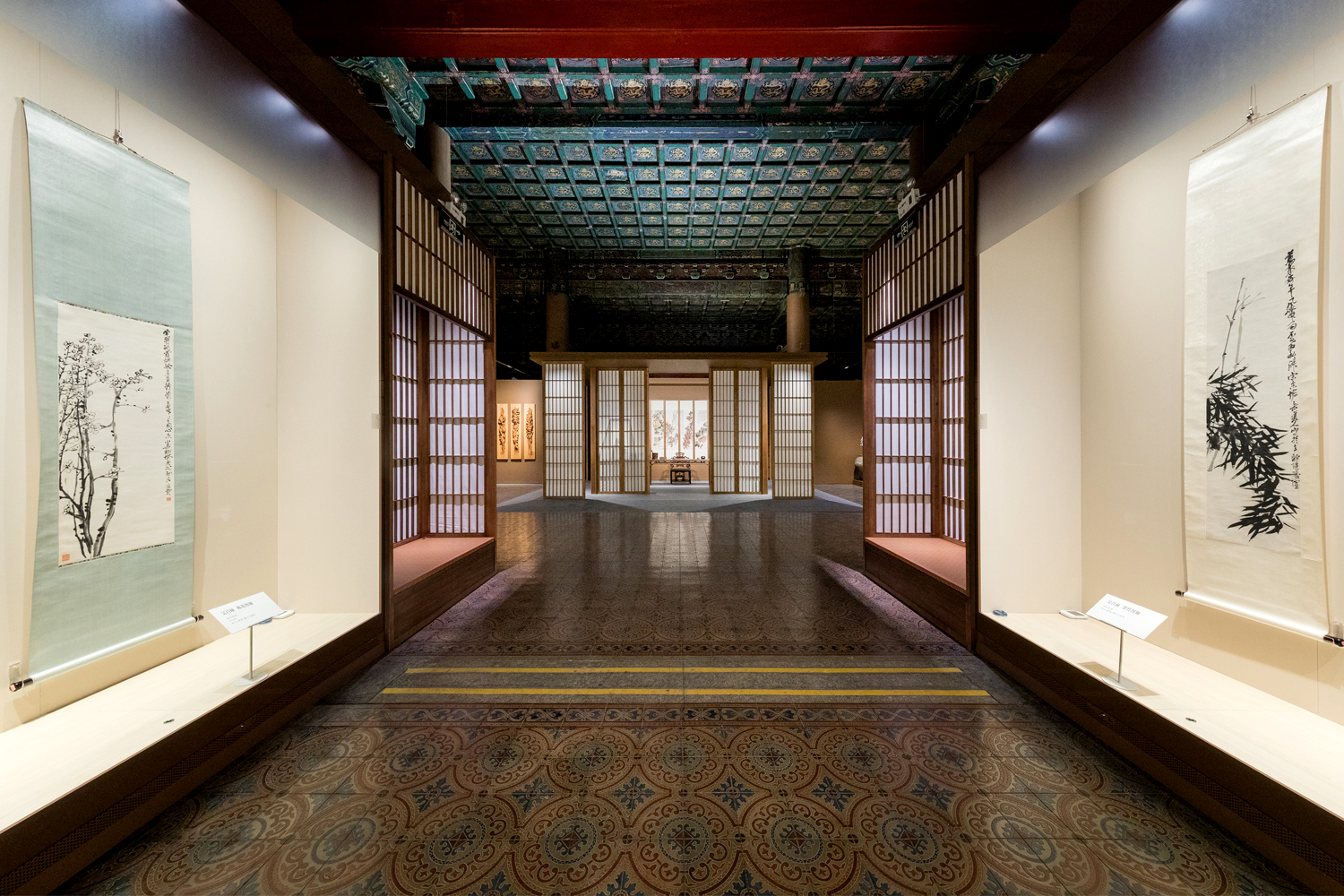

Lotus and Water Fowl by Zhu Da, Qing dynasty
Section II: Fragrant Flowers of the Wine Vessel Hut (Fou lu)
This section breaks with the typical gallery arrangement of works by the period of creation and places Wu’s paintings in groups according to the seasons of the flowers depicted in the works. With all four seasons represented, the section showcases the transience of the seasonal themes with the artist’s grand freehand style.
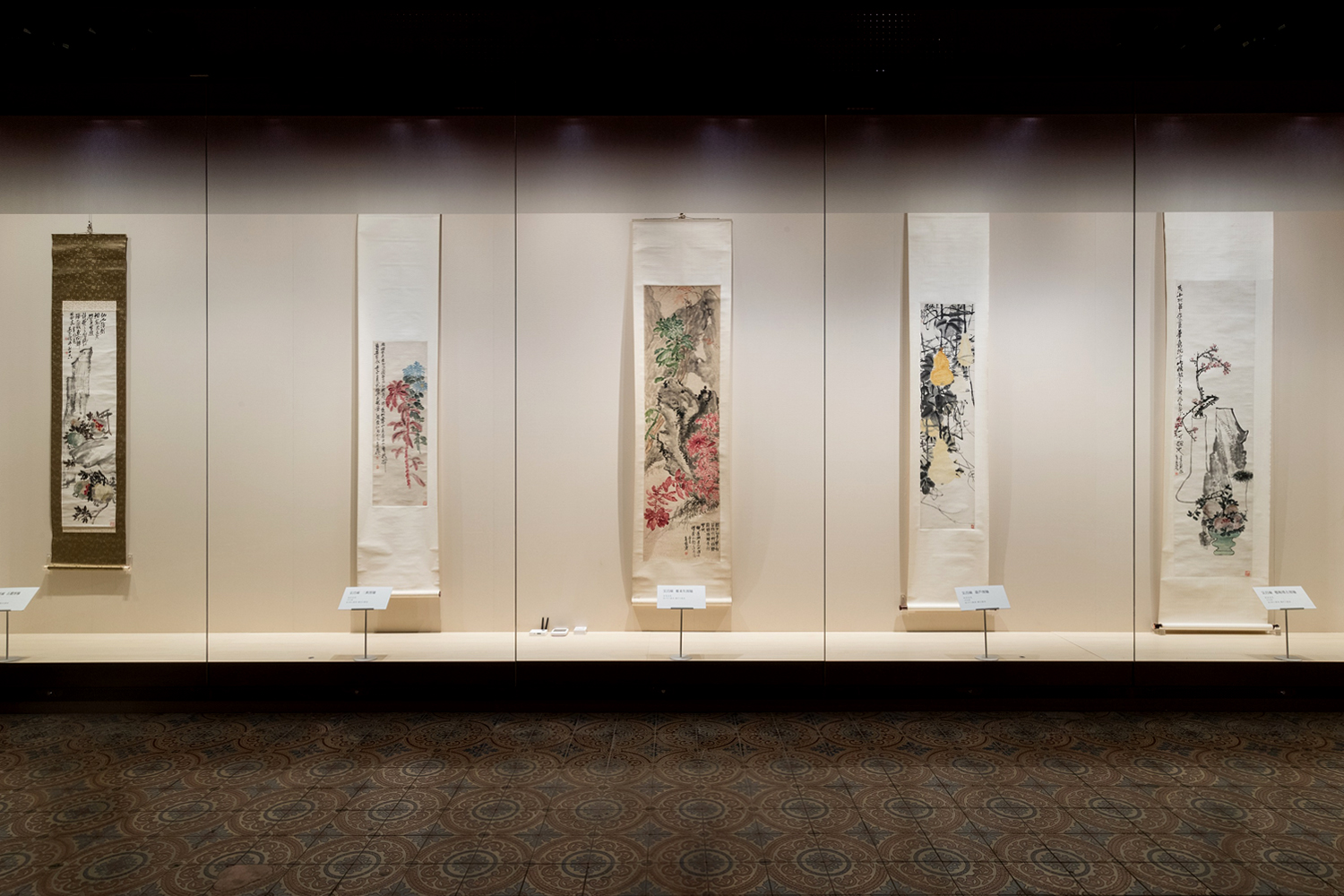
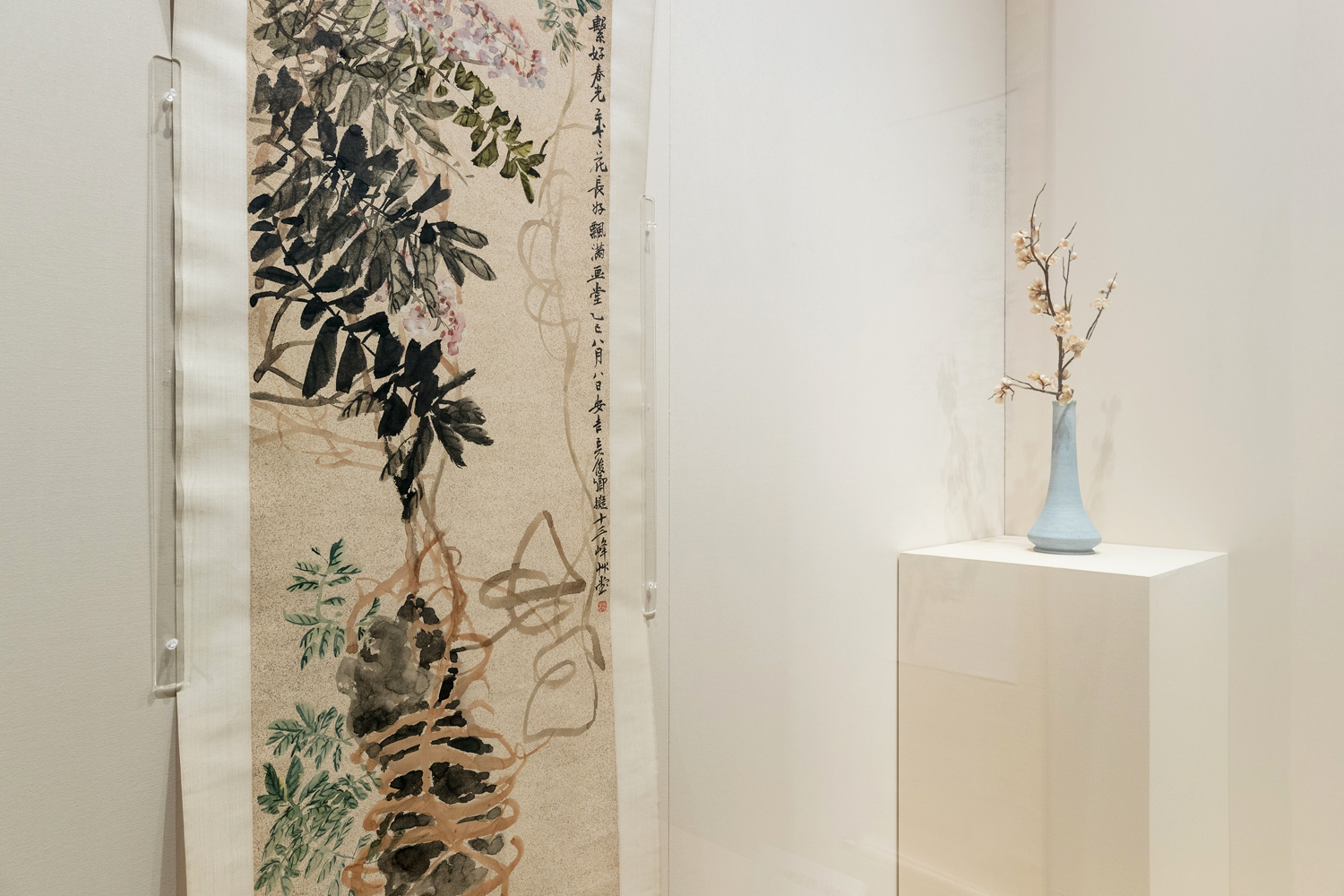

Section III: Stone Interactions Diffusing Fragrance
This section presents the exchange of Wu Changshuo within artistic circles and features joint works by Wu and his colleagues. Also on view are works by artists such as Chen Shizeng (1876–1923), Chen Banding (1876–1970), and Qi Baishi (1864–1957) who were influenced by Wu’s art.
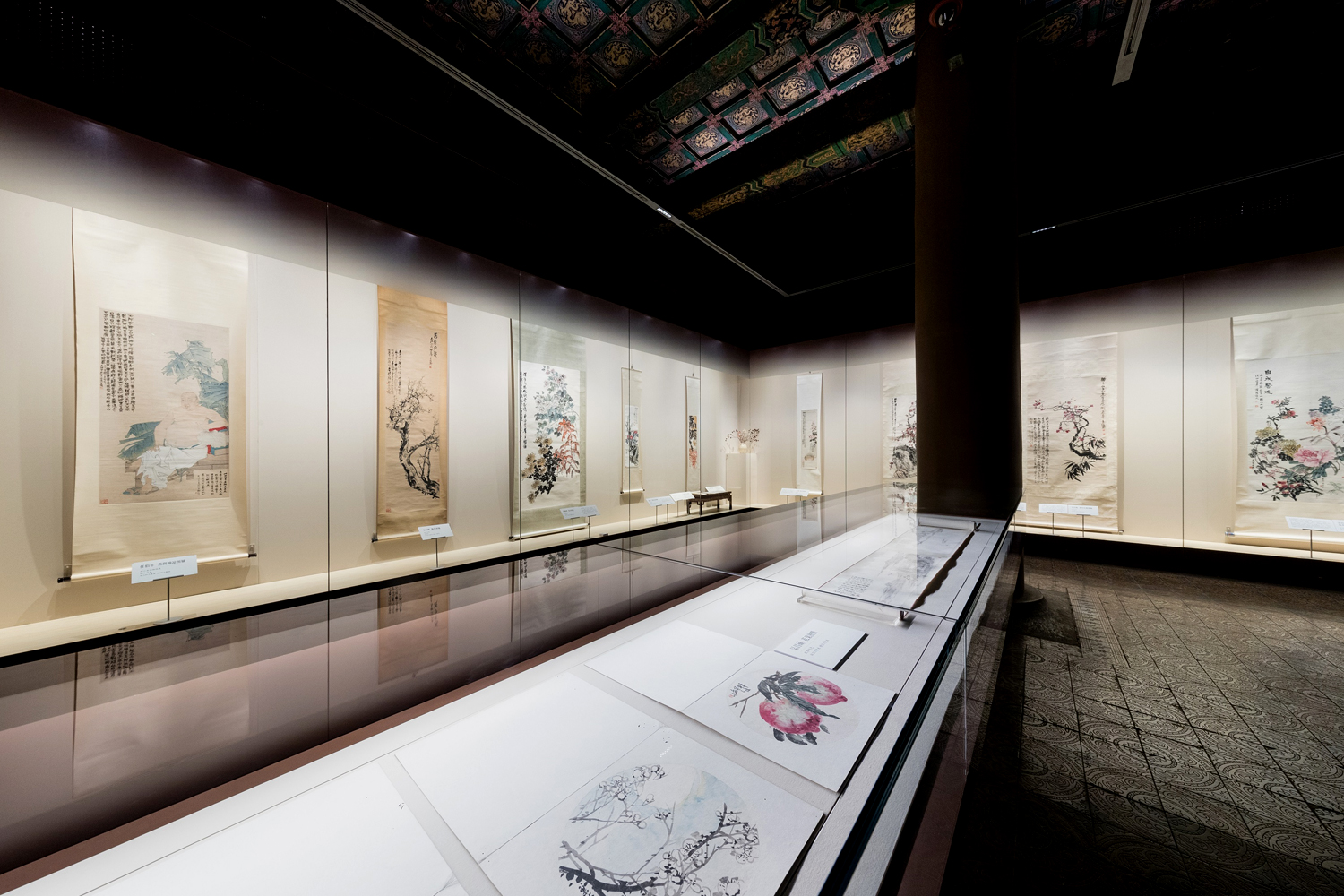
Section IV: Iron Brush with Soft Bristles
This section exhibits Wu’s poetry, calligraphy, painting, and seal engraving with an emphasis on his achievements in seal engraving and calligraphy.
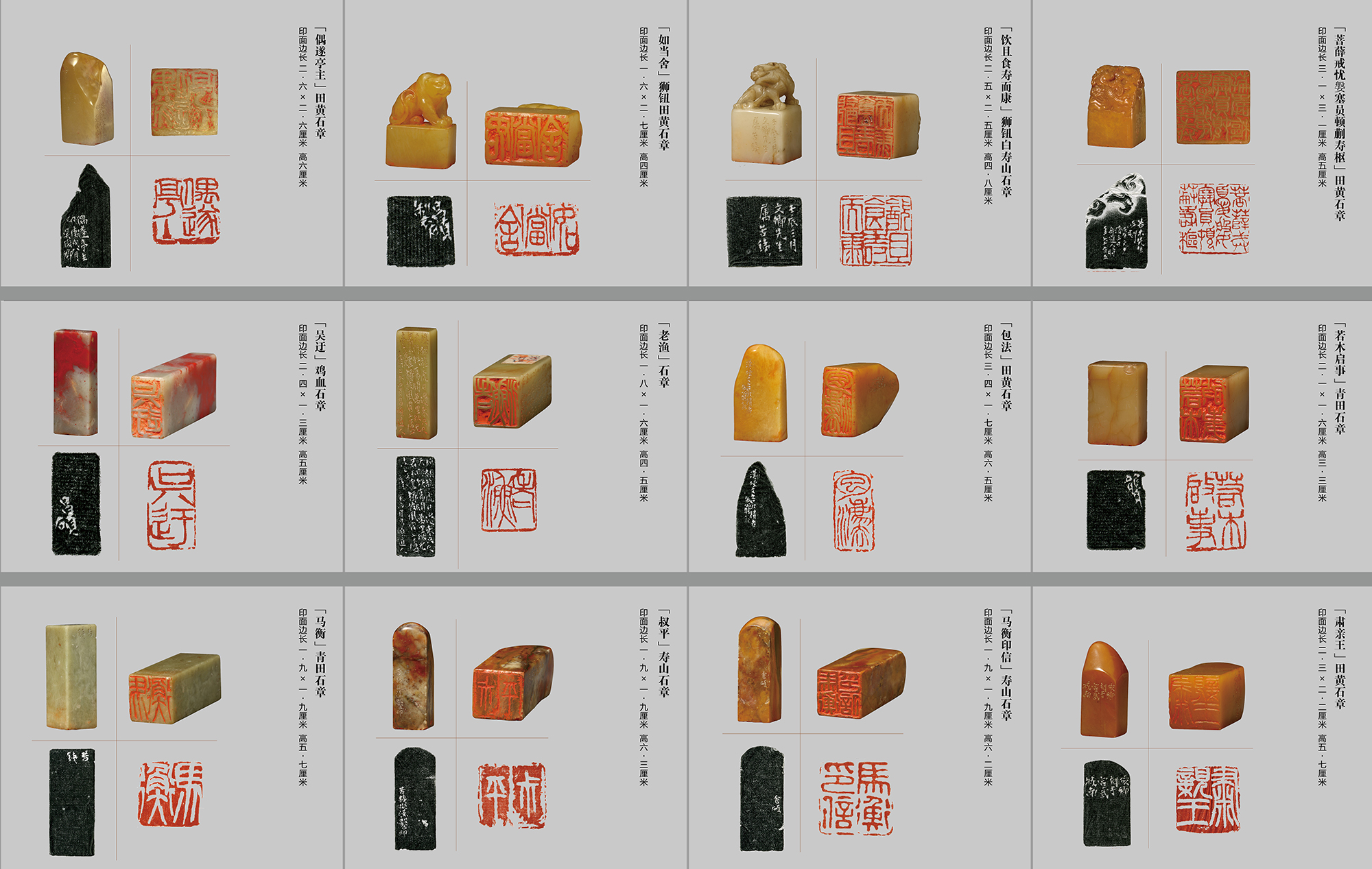
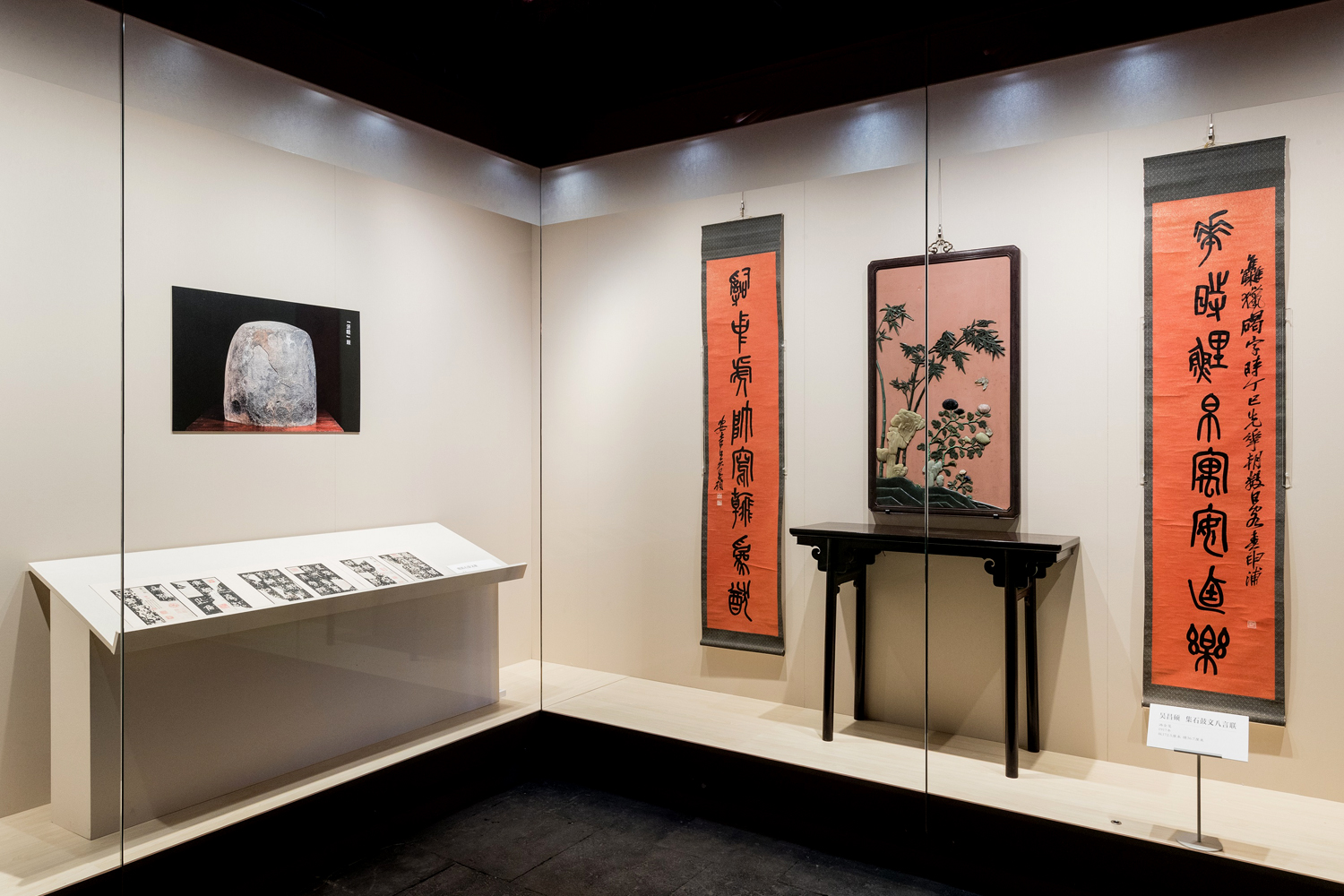
The curators have selected two works to debut after their restoration by the Museum’s conservaors. Peaches and Wine (Taoyan jiutan tu) and a plaque with the inscription “Fanjiang Studio” (Fanjiang zhai) made for the Palace Museum’s second director Ma Heng (1881–1955) have been restored and mounted in preparation for the exhibition.
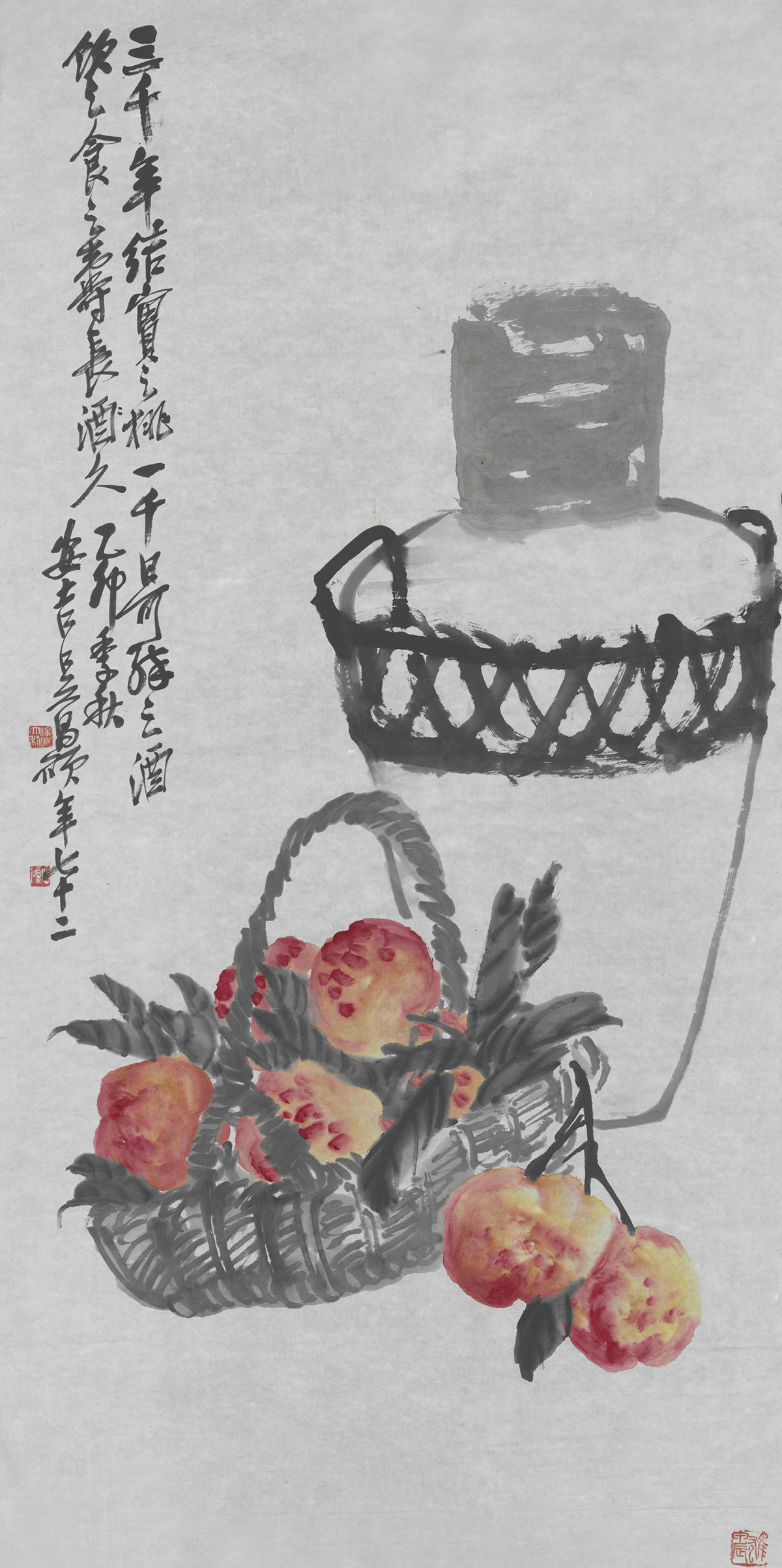
Peaches and Wine by Wu Changshuo, Qing dynasty
Additionally, the Beijing Fine Art Academy (Beijing huayuan) has loaned Wu’s Artist Fees (Runge) manuscript, which he wrote for Qi Baishi, and a collection of Qi’s paintings. Two portraits of Wu Changshuo by Ren Bonian and a work called Culmination of Prosperity (Dingsheng tu) with rubbings of the stone drum inscriptions have been loaned by the Zhejiang Provincial Museum.
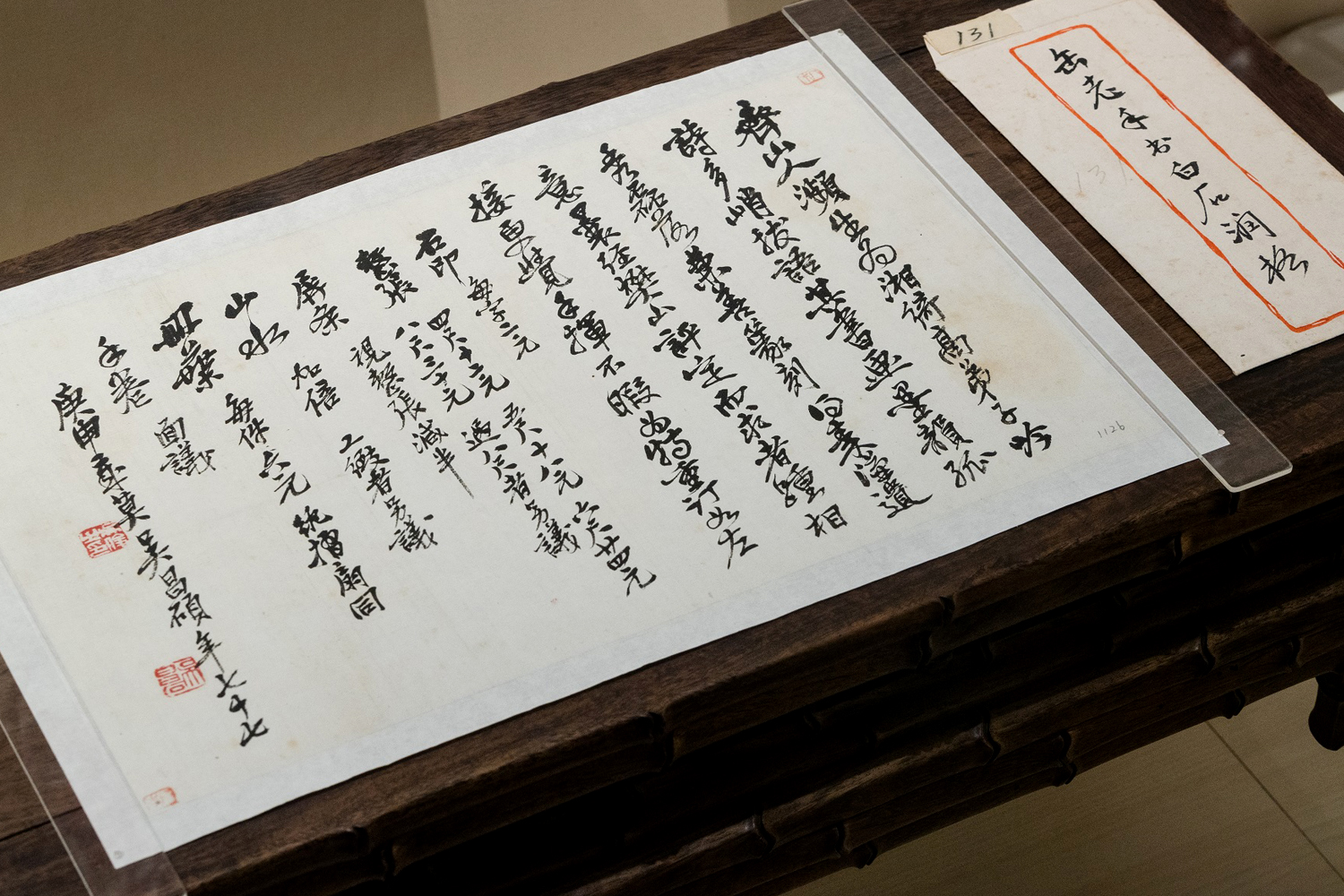
Artist Fees by Wu Changshuo for Qi Baishi
Inaugural Exhibition at the New Calligraphy and Painting Gallery
The exhibition is held in the Palace Museum’s new Calligraphy and Painting Gallery in the Hall of Literary Brilliance (Wenhua dian). The gallery had been closed since 18 December 2017 for renovations. This special focus on Wu Changshuo’s work serves to officially inaugurate the new gallery. The Palace Museum has designated the year 2018 to welcome new approaches through advancement and transformation. With “New-Direction Art” (Yishu xiangxin) as the target, the Museum administration is striving to experiment with “Culture +” (Wenhua +) and provide visitors with an unprecedented experience at the Forbidden City.
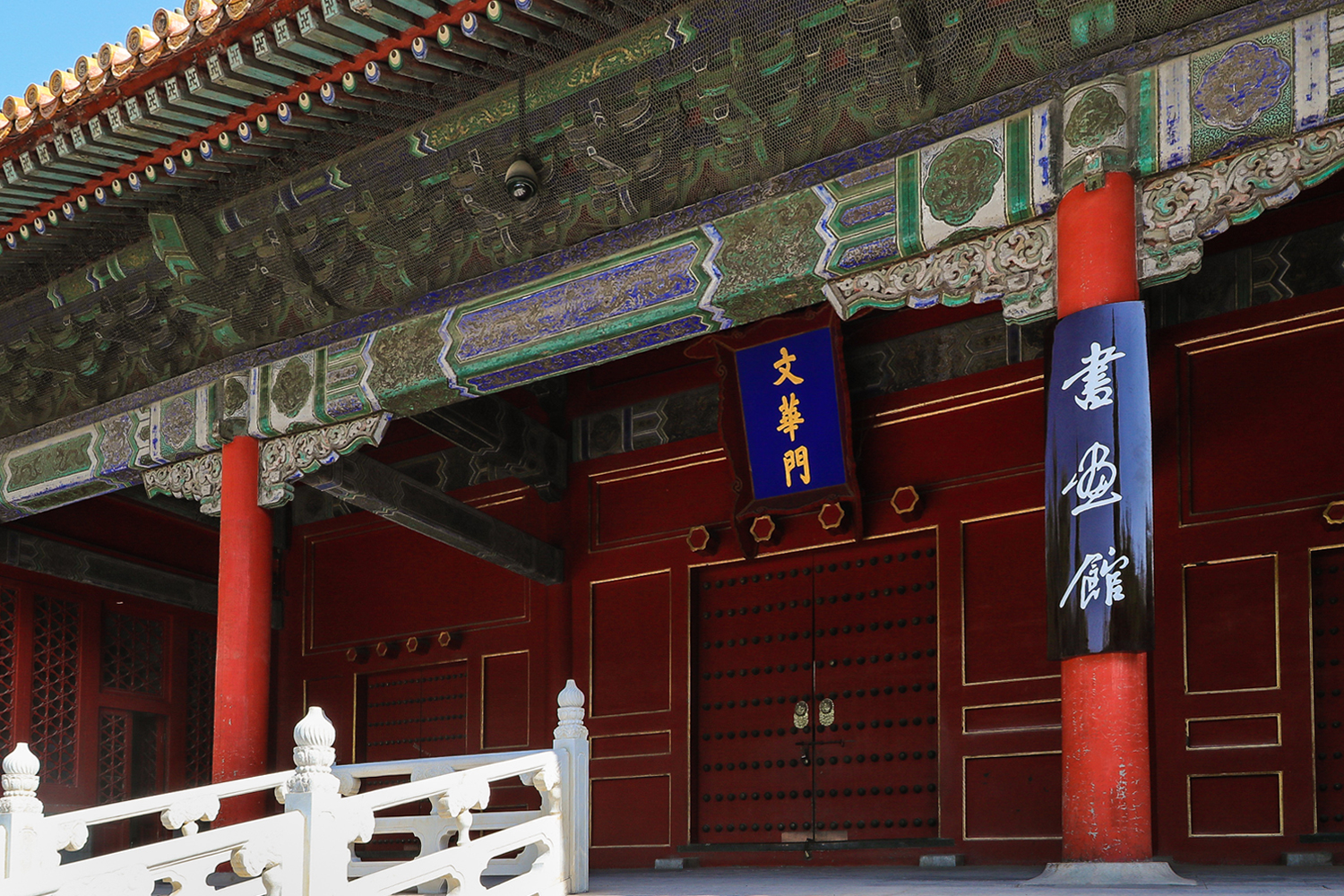
The gallery renovations were conducted with the utmost care to preserve the heritage architecture of the exhibition space while integrating facilities designed to effectively display invaluable works of art. The resulting space is a successful blend of functional and aesthetic design. The upgraded space was designed with utmost caution to retain the original caisson ceilings and flooring as part of the integrated design; newly installed toplighting draws attention to the historic ceiling design. Furthermore, climate controls in the gallery was designed with aerospace technology, which include advanced filtration systems to maintain the proper temperature and humidity necessary to preserve the displayed calligraphy and paintings. These designs follow the Museum administration’s directive to maintain the original architectural design in exhibition spaces and themes, present unique galleries for special exhibitions, invigorate the Museum with temporary exhibitions, and draw attention through large scale exhibitions.

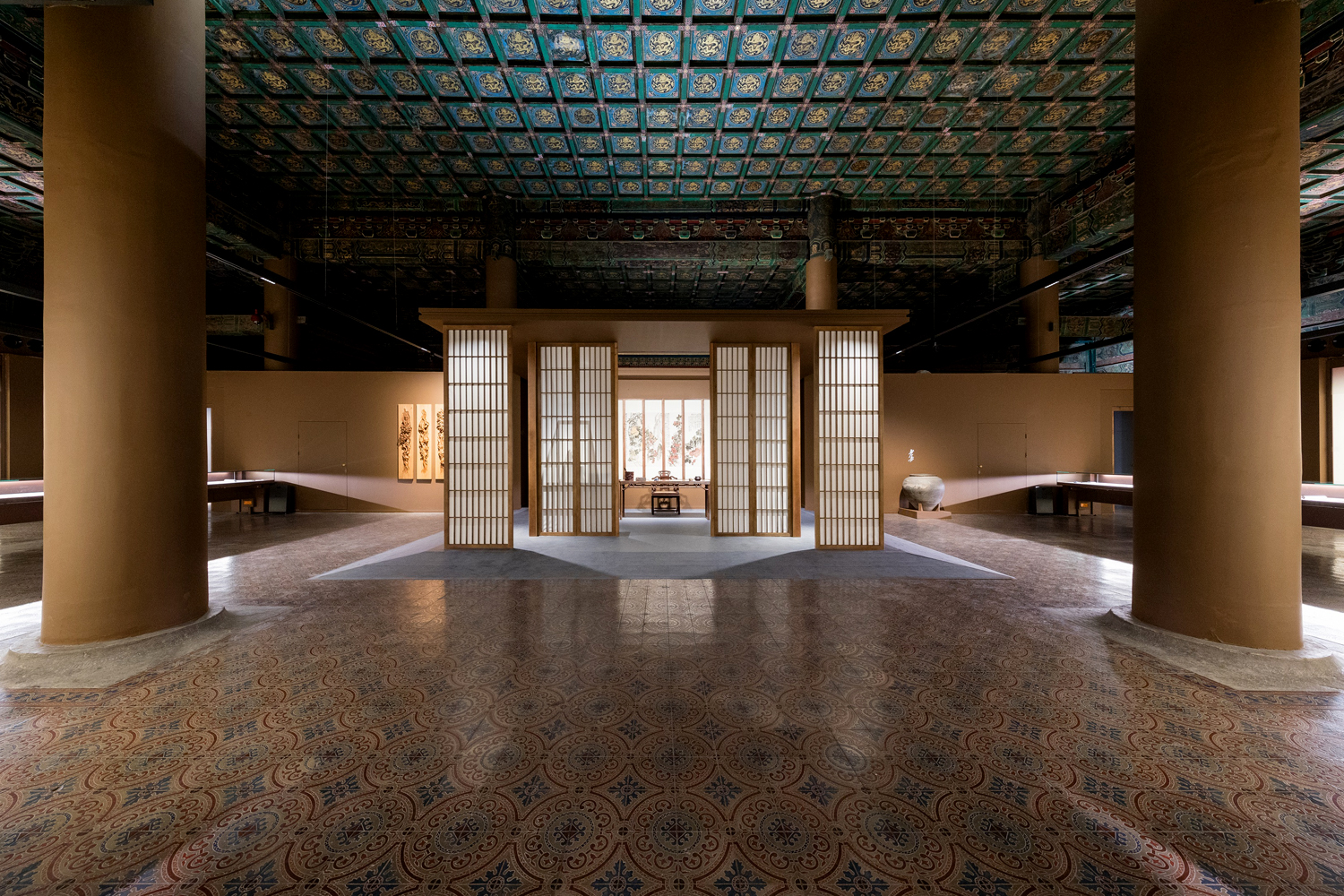
Commemorative Publication
The Palace Museum has published The Calligraphy and Paintings of Wu Changshuo in the Palace Museum Collection (Gugong cang Wu Changshuo shuhua quanji) as part of this focus on the artist’s life and work. Edited by experts at the Palace Museum, the collected works have been assembled by an elite team of scholars and professionals in the field. Over half of the featured works in the volumes are published for the first time. With four volumes in total, the collection features one volume of Wu’s calligraphy and seal engraving and three volumes of his paintings. The seals are shown to scale with pictures of the inscriptions, materials, and rubbings. The paintings are arranged by date and show the evolution of Wu’s style over his forty-year career.
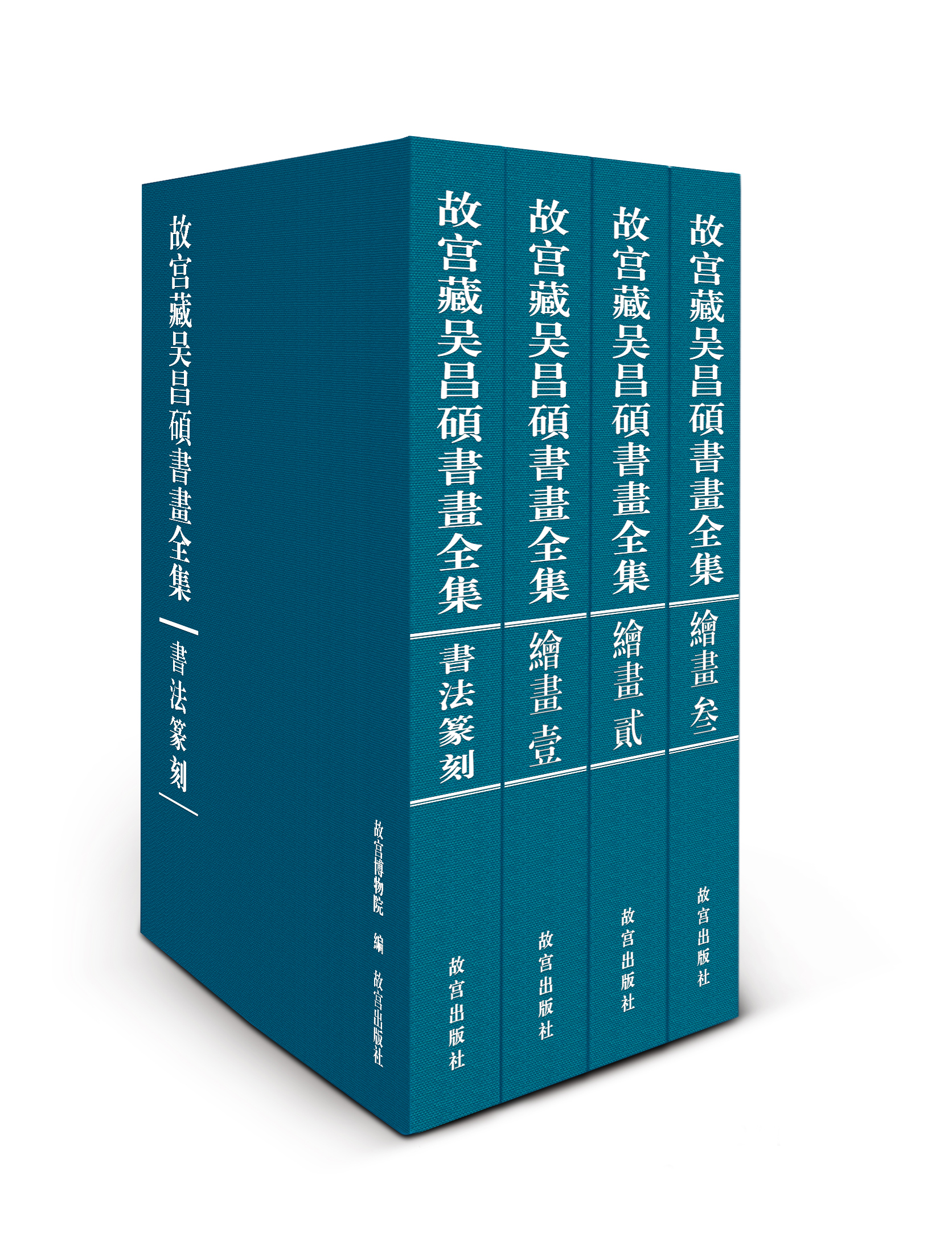
Exhibition sponsored by Agricultural Bank of China
Chinese original edited by Zhang Lin
Translated and edited by Adam J. Ensign and Zhuang Ying





